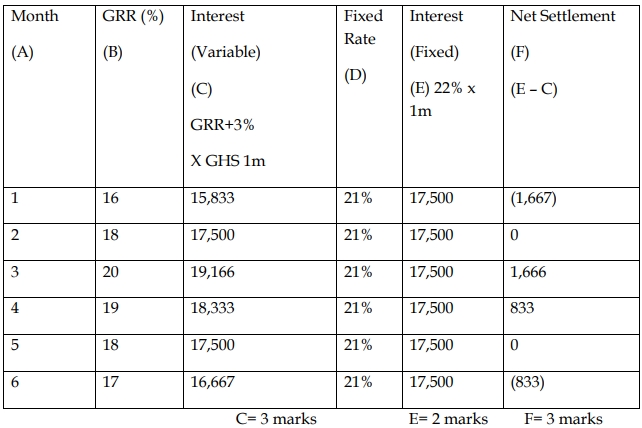- 5 Marks
Question
In the last couple of years, the Cedi has depreciated substantially against the US Dollar. This has had an adverse effect on the financial performance of most of the multinational companies in Ghana.
Required:
As a Financial Adviser of your organization, a multinational company involved in the export trade, recommend actions to be taken to minimize the loss on foreign currency transactions. (5 marks)
Answer
Actions to be taken to minimize the loss on foreign currency transactions include:
- The usage of a forward exchange contract: A contract, usually between a bank and its customer, for the purchase/sale of a specified amount of a stated foreign currency at an exchange rate fixed at the time the contract is made for performance at a future date agreed upon at the time of the contract.
- To borrow foreign currency: A Ghanaian company that needs to pay a certain amount in US dollars in two months can borrow that amount of US dollars now, avoiding and reducing translation/conversion risks.
- Inserting protection clauses: The exporter can incorporate a clause in the contract of sale to adjust the selling price if the exchange rate moves outside an agreed range. Additional charges may be made due to conversion or translation changes which may be agreed to be borne by the importer.
- Export factoring: Exporters can raise foreign finance through an international factor.
- Operating a domiciliary account: Maintaining an account in a Ghanaian bank denominated in the desired foreign currency allows the company to use proceeds from export sales to settle future commitments.
(Any 5 points for 5 marks)
- Tags: Currency risk, Depreciation, Financial management, Foreign Exchange, Ghana, Hedging, multinational companies
- Level: Level 3
- Uploader: Dotse

